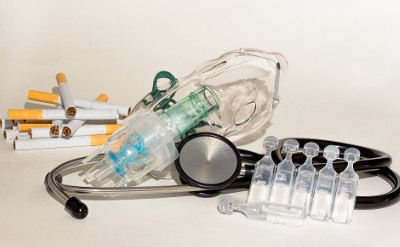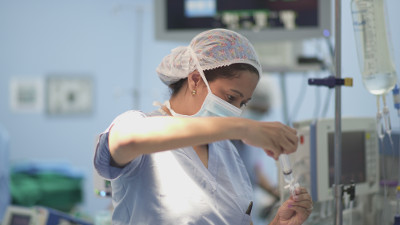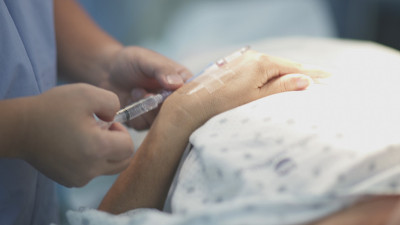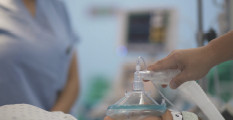Thoracic Surgery from the Anesthesiologist's Perspective
Preparatory evaluation of the patient undergoing into a schedulec thoracic surgery
The preoperative evaluation of a patient who will undergo into a thoracic surgery, focuses on the overall evaluation of the patient's cardiac and respiratory status, trying to predict his or her response to a lung surgery and tolerance to it.
The identification of patients at high risk and the anticipation of possible complications will allow the introduction of a preoperative treatment that optimizes the physical condition of the patient before surgery and the planning of both, anesthesia and support needs, during the immediate postoperative period.
The necessary information for the evaluation of the patients, is extracted from the data that provides the classic evaluation and those that provide the specific tests of cardiopulmonary function. In such way, before undergoing thoracic surgery you should go to your anesthesiologist, to check on aspects that may complicate the surgery and whose risk can be minimized.
It is important that you mention to your doctors any aspect or antecedent even if you do not consider it important so you can reduce the risk of complications.
Risk's Factors
When we are faced before a patient who is going to undergo pulmonary surgery, for example, some aspects must be taken into account:
- Toxic habits, mainly smoking
- The coexistence of other lung diseases such as bronchitis or asthma, which should be compensated at the time of their intervention
- Advanced age is associated with a higher percentage of complications.
- The associated pathology, mainly pulmonary and cardiovascular, such as arterial hypertension. Some others like Diabetes you should optimize so that you go in the best conditions to surgery.
- The presence of obesity.

One of the risk factors that you can modify before undergoing any surgery and especially a thoracic surgery is smoking. Smokers present difficulty in the mobilization of secretions and dysfunction in the smallest airway. It is useful to abandon the habit for eight weeks prior to surgery, reducing the incidence of pulmonary complications in half, compared with those who continue to smoke.
Anesthesiologist will also evaluate your exams and blood tests to rule out the presence of an infectious process, the level of hemoglobin and alterations in coagulation. You will also be asked to have a simple chest x-ray and an electrocardiogram in some cases. You will be asked for your blood type and when it is necessary, the reserve of blood components in case they are required to be used during or after surgery.
You will be told when you should go to an evaluation with a Lung Specialist, who in addition to assessing your lung capacity, will perform some other specific tests that expand information about cardiorespiratory functionalism. Probably, the Lung Specialist will ask for a simple spirometry, that is the functional test that provides more information about lung function.
Some recommendations that will be emphasized to improve your health before a thoracic surgery are the following:
- Quit smoking
- Physical exercises mainly aimed at rehabilitating the respiratory muscles (triflow)
- Administration of bronchodilator medications
- Treatment of associated respiratory infections
- Improvement of nutritional status.
The Anesthesiologist will tell you which medicines you should stop taking or should continue to take before surgery. Likewise, the fasting time to avoid complications such as bronchoaspiration
Before Surgery

Depending on the approach the surgeon will take, for your surgery:
- If the case is an open thoracic surgery (Thoracotomy), after an evaluation, the anesthesiologist will place an epidural catheter in the back, which will serve to administer drugs directly into the nerve roots and thus decrease pain after surgery. Pain management after surgery is one of the most important factors contributing to your lung recovery. Placement of the catheter is very fast and is performed under local anesthesia.
- If the case is Thoracoscopy a video-assisted thoracic surgery (VATS), the anesthesiologist will usually use intravenous pain medication because the surgical wound is quite small and your surgeon will place local anesthesia unless there is a contraindication.
The surgeon will choose and explain the surgical technique depending on each case.

If necessary, the anesthesiologist will place a small catheter in an artery (usually radial) to evaluate in a direct way the blood pressure and also, to evaluate the oxygen concentration in the patient's blood and when it is deemed necessary, a central venous catheter to pass medications directly to the heart. All these procedures will be performed under the effects of anesthesia.
If something characterizes thoracic surgery in general, it is the need to keep the lungs working collapsed in most surgical procedures, so that the intervention can be performed, that is, so that the surgeon has a better visualization of the structures that Must operate. This tube will be placed to ventilate both lungs and when necessary a single lung. The anesthesiologist will place it when you are asleep and will remove it when the surgery is over. In most cases, you will leave the operating room with oxygen mask only to continue your progress in Intensive Care or recovery room as the case may be.

Afterwards, you will go to the Intensive Care Unit where you will be closely monitored by an ICU specialist who will evaluate your lung function, pain management, among some aspects.
Thais Coronado M.D
Cardiovascular Anesthesiologist



